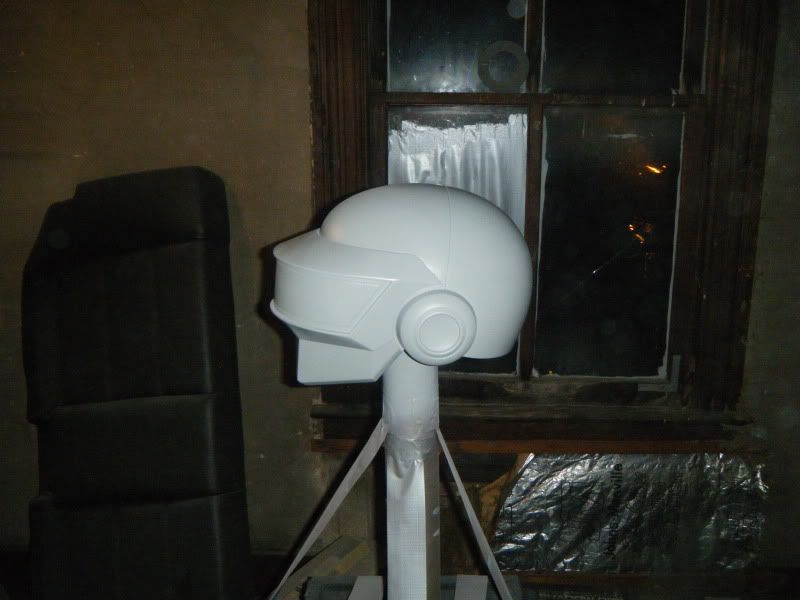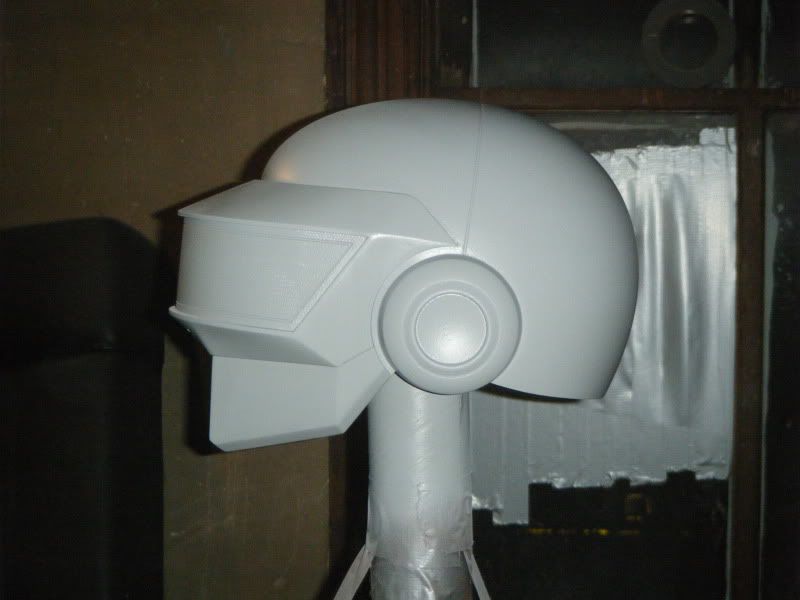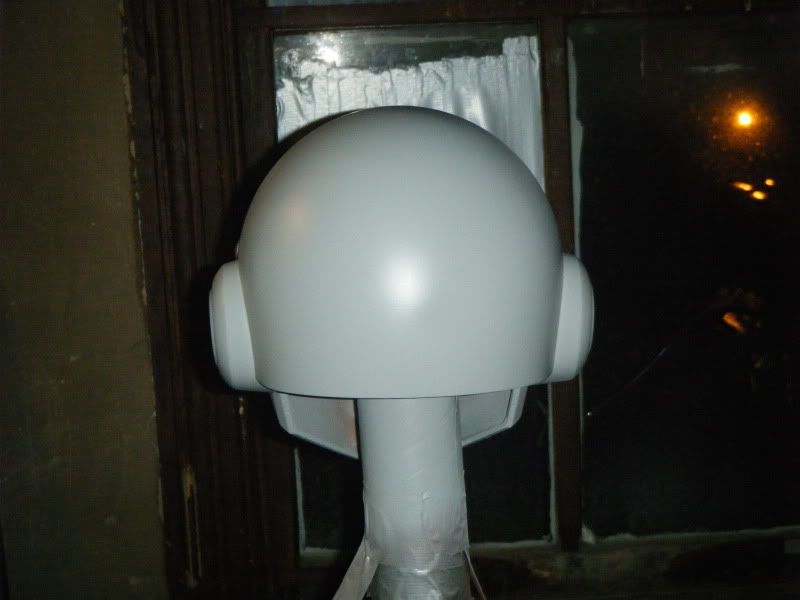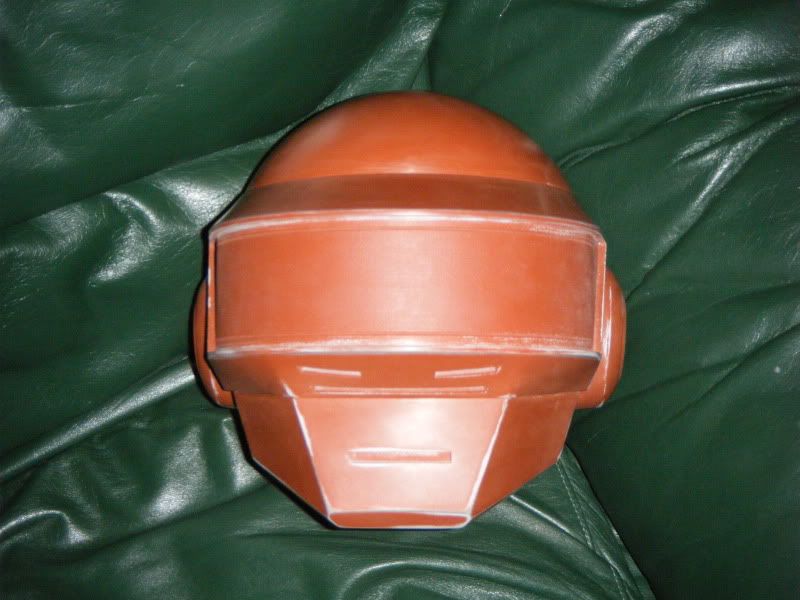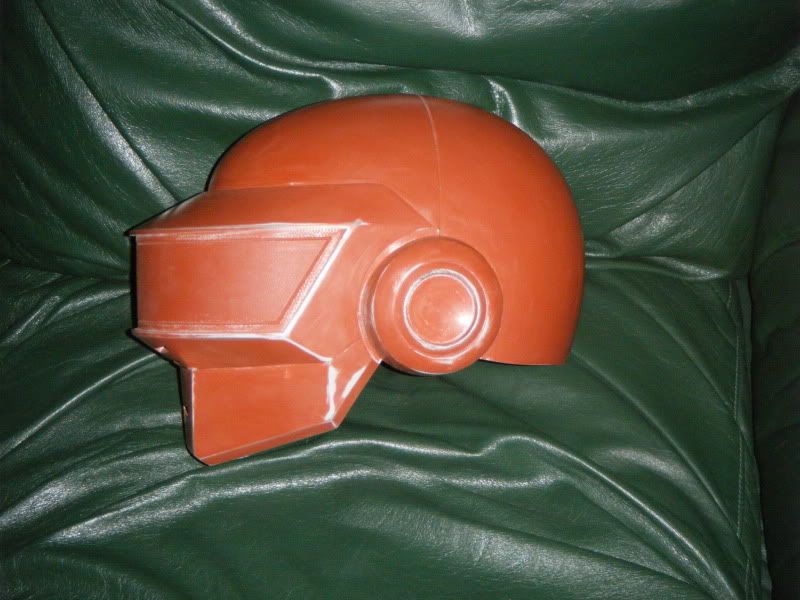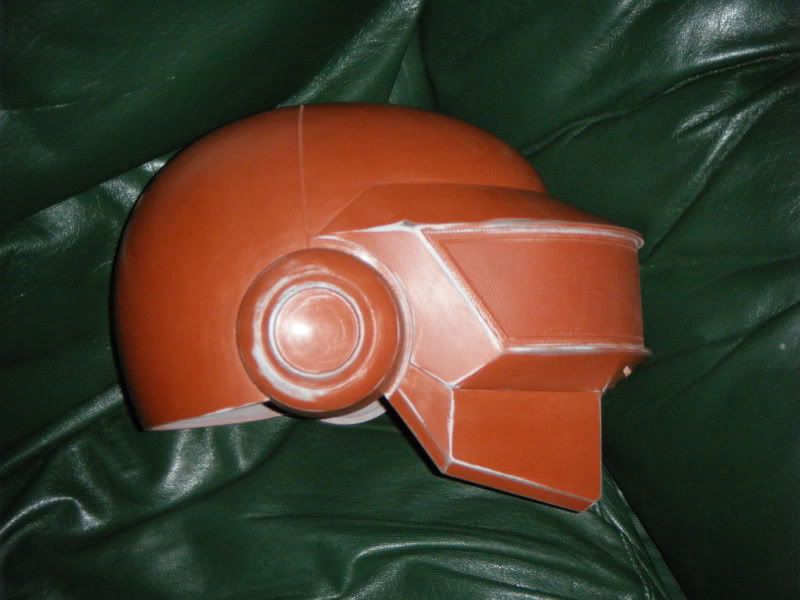So I figure I'll chime in a bit here. Yah, that's my model.
And yes, I will get around to detailing my project in due time, but for now, let take care of the 3D printing speculation.
The quality of the print is a known quantity for those in the know. Like a real printer, you can only get so much resolution out of the system before it just doesn't work. I will endeavor to explain.
Theory: polygon count
Nope. This helmet was made from a 1M poly half model, reduced to 0.5M and then mirrored. So there are over a million triangles that make up that shape. Basically the wire frame is so dense you can't see through it on most 'full size' renders. And it wasn't made from interpolated polygons either. The original model was generated in proper CAD software. It's my tool of choice / part of what I do for a living. It's not a 3D 'art' package like say Blender, so there are no high/low poly count models, normal maps, or anything like that. A 5" radius is a 5" radius, and that's what is used to generate the STL file which goes to the printer. If I remember correctly my settings were around 0.03mm and 0.75deg on the STL generation tolerances.
Theory: not DLP SLA
Nope. This is SLS, which stands for Selective Laser Sintering, which is a fancy what of saying melting/binding together. SLA has a number of translations, depending on the company, but typically it's some like Selective Laser Addition. If you saw the link on MAKE Magazine's page about the DLP projector and a bath of blue goo that is true SLA (albeit hacked). Or there was the prototype figurine in the Small Soldiers movie (they got it pretty close though certainly 'Holywood-ified' the process). Wiki is pretty good on these.
SLS uses a powder that is melted by a laser very close to it's transition temperature, so a result is 'bleed'. As the heat from a region that has just been struck by the laser dissipates, it sinters nearby particles as well, causing bleed. It's unavoidable, and the gurus who work with these machines are constantly tweaking variables to try and mitigate this.
Theory: layer thickness
This ones is kinda close. The layers are normally under 0.1mm thick so you're not hurting for accuracy.
Hope that dispels any misconceptions.
Part of the brilliance and annoyance of SLS is that it's typically made of nylon and a 'filler' of glass or recycled SLS nylon. The result is something that is 'harder' than the overall parts 'strength and durability' would indicate. You have very, very hard particles that are 'weakly' (relatively speaking) glued together. So while a high enough drop will break a SLS part into adequately tiny pieces, sanding and finishing it is an absolute bugger. It's very slow going. Which is why the additive filler/primer method is ideal for working with SLS nylon. Fella I'm working with on my helmet design (also SLS nylon) said it took him 24 hours (he guestimates) to get to 1200 grit. Tis fun.

